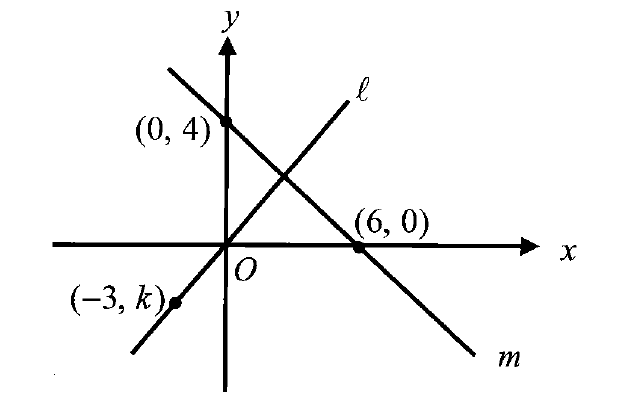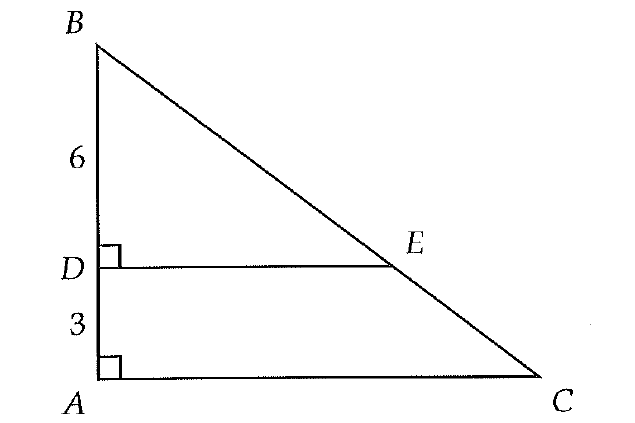TRANSLATING VERBAL PHRASES TO ALGEBRAIC EXPRESSIONS
Example 1 :
Two numbers have a sum of 4. If one of them is s then the other is ?
Solution :
Sum of two numbers = 4
One number + other number = 4
s + other number = 4
other number = 4 – s
So, the required other number is 4 - s.
Example 2 :
The sum of two numbers is 13. One of the numbers is x. what is the Other number ?
Solution :
Sum of two numbers = 13
One number + other number = 13
x + other number = 13
other number = 13 – x
Example 3 :
Two numbers are in the ratio 1 : 2 . If the smaller one is a then the larger One is ?
Solution :
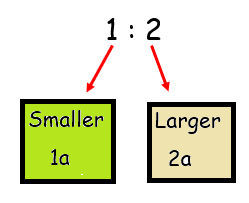
So, the larger part is 2a.
Example 4 :
Two numbers in the ratio 2 : 3 can be represented by 2c and … ?
Solution :
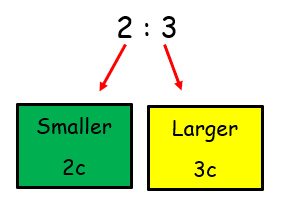
Example 5 :
If there are 27 students in a class and "b" are boys, then there are … girls ?
Solution :
Total number of students = 27
number of boys + number of girls = 27 students
b + girls = 27
girls = 27 – b
Example 6 :
There are "s" students in a class. If "g" of them are girls, how many of them are boys ?
Solution :
number of boys + number of girls = s students
boys + g = s
boys = s – g
Example 7 :
If the smaller of two consecutive integers is y, then the larger is… ?
Solution :
Given, Smaller integer is y
Larger integer is y + 1
Example 8 :
The larger of two consecutive integers is k. what is the smaller integer?
Solution :
For example,
If "x" be the first integer, then x+1, x+2,....... are consecutive integers.
x < (x+1) and (x+1) < (x+2)
Then smaller of x is (x-1).
Given, larger integer is k
smaller integer is k – 1
Example 9 :
The larger of two consecutive odd integers is v. what is the smaller one?
Solution :
Given, larger odd integer is v
Smaller one is v – 2
Example 10 :
n is the smallest of three consecutive integers. What are the other two integers ?
Solution :
Given, smallest integer is n
If n is the first number, then
n+1, n+2, ................
are consecutive numbers.
So, the other two numbers are n+1 and n+2.
Example 11 :
Three consecutive integers in ascending order are
x, …, … ?
Solution :
Given, first integer is x
Second number = x + 1
Third number = x + 2
So, three consecutive integers in ascending order are x, x + 1, x + 2.
Example 12 :
Three consecutive integers in descending order are
a, …, … ?
Solution :
Given, first integer is a
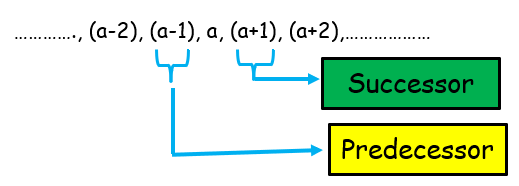
So, Three consecutive integers in descending order are a, a - 1, a – 2.
Example 13 :
If the middle integer of three consecutive integers is m, then the other two are …… ?
Solution :
Given, middle integer is m
Predecessor = m - 1
Successor = m + 1
So, other two are m – 1 and m + 1
Example 14 :
The middle integer of three consecutive even integers is m. what are the other two integers ?
Solution :
Given, middle even integer is m
Predecessor = m - 2
Successor = m + 2
So, other two are m – 2 and m + 2
Example 15 :
Two numbers differ by 3. If the smaller one is s then the other is ?
Solution :
Larger number - Smaller number = 3
Other number = Large number
Large number - s = 3
Large number = 3+s
So, the other number is 3+s.
Example 16 :
Two consecutive odd integers in ascending order are d and … ?
Solution :
Given, one odd integer is d
Predecessor = d+2
Example 17 :
Shiv works in a mall and gets paid $50 per hour. Last week he worked for 7 hours and this week he will work for x hours. Write an algebraic expression for the money paid to him for both the weeks.
Solution :
Amount earned per hour = $50
Number of hours he worked last week = 7
Number of hours he worked = x
Total number of hours he worked sofar = 7 + x
Amount paid = 50(7 + x)
Using distributive property, we get
= 350 + 50x
Example 18 :
Sonu and Raj have to collect different kinds of leaves for science project. They go to a park where Sonu collects 12 leaves and Raj collects x leaves. After some time Sonu loses 3 leaves and Raj collects 2x leaves. Write an algebraic expression to find the total number of leaves collected by both of them.
Solution :
Number of leaves collected by Sonu = 12
Number of leave Raj collects = x
After some time,
Number of leaves Sonu has = 12 - 3 ==> 9
Number of leaves Raj has = 2x
Total number of leaves collected = 9 + 2x
Example 19 :
A school has a rectangular play ground with length x and breadth y and a square lawn with side x as shown in the figure given below. What is the total perimeter of both of them combined together?
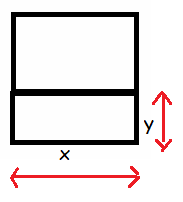
Solution :
Perimeter of the shape = sum of lengths of all sides
= x + y + y + x + x + x
= 4x + 2y
Kindly mail your feedback to v4formath@gmail.com
We always appreciate your feedback.
©All rights reserved. onlinemath4all.com
Recent Articles
-
Digital SAT Math Problems and Solutions (Part - 106)
Feb 04, 25 08:16 AM
Digital SAT Math Problems and Solutions (Part - 106) -
SAT Math Resources (Videos, Concepts, Worksheets and More)
Feb 04, 25 08:15 AM
SAT Math Resources (Videos, Concepts, Worksheets and More) -
Digital SAT Math Problems and Solutions (Part - 107)
Feb 04, 25 08:11 AM
Digital SAT Math Problems and Solutions (Part - 107)
